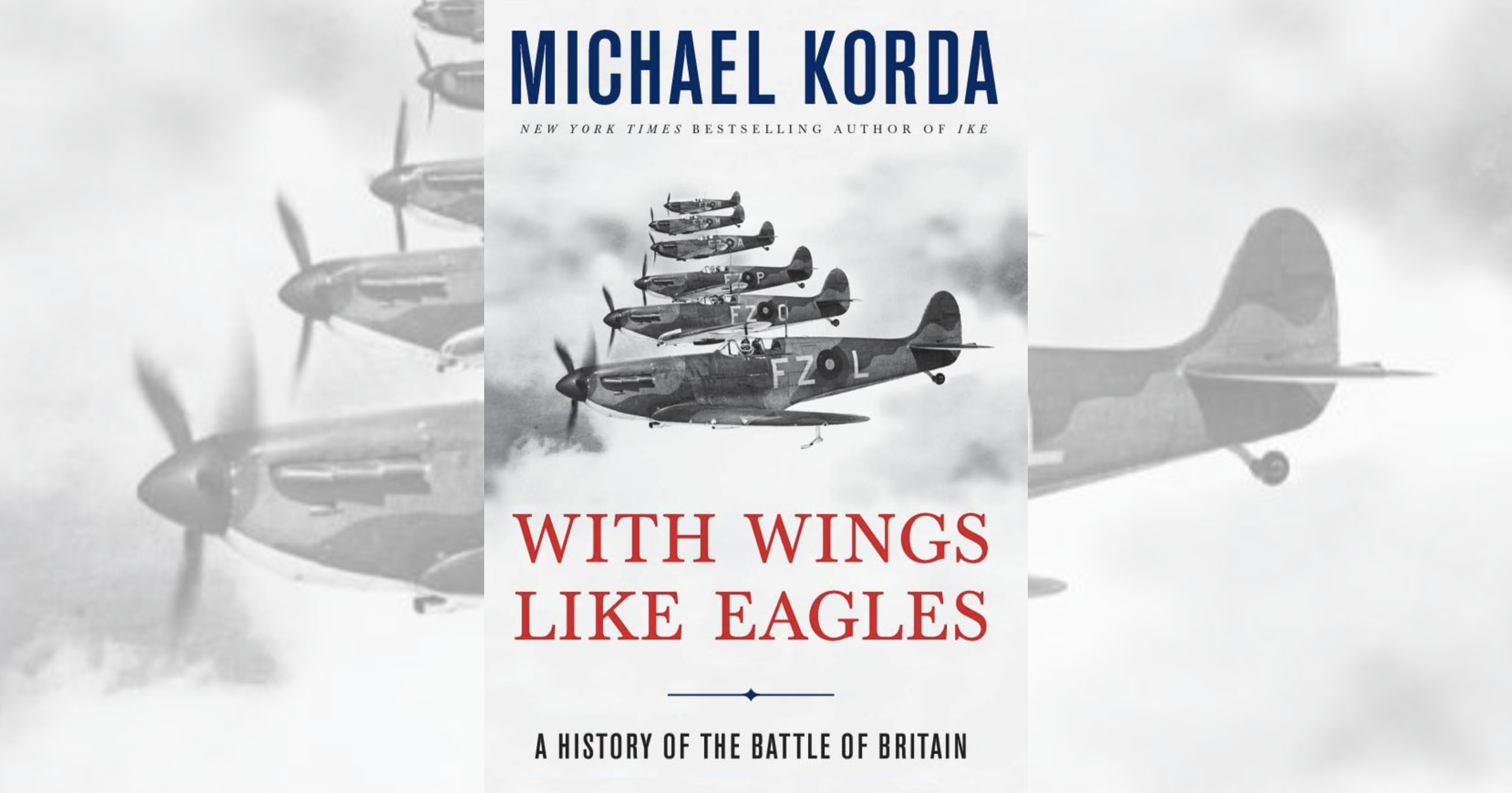With Wings Like Eagles: A History of the Battle of Britain By Michael Korda. 336 pp. Harper Collins, 2009. $25.99.
The 1940 struggle for air superiority between the Royal Air Force and the Luftwaffe called the Battle of Britain is, hands down, the most thoroughly studied air operation of the Second World War. Since the RAF’s first popular official history appeared in 1941, the battle (in British writings often capitalized, as if there could be no other) has been the subject of hundreds of histories, memoirs, and technical examinations. So it’s a fair question whether another book on the subject is needed. To be worthwhile, it should present new factual information or a dramatic new interpretation of the existing facts, or else tell the story in such an engaging fashion as to reach a new generation of readers. In 300 crisp pages, Michael Korda chooses to do the last. In his version of the battle he ranks alongside the defeat of the Spanish Armada, Trafalgar, and Waterloo in importance, he weaves the political, strategic, operational, and technical elements into a magnificent narrative.
With Wings Like Eagles does not claim to be a work of original research. It is, instead, a well-crafted synthesis of existing literature. Korda emphasizes a number of points that are worth revisiting. British success was not the product of improvisation and “muddling through”; the integrated air defense system that saved Britain in 1940 was the result of years of peacetime development, much of it by governments often dismissed as appeasers. This was no David-and-Goliath struggle; the fighter forces were about evenly matched. Air Chief Marshal Hugh Dowding was not looking for a knockout blow against the German raiders; he sought a steady level of attrition that the Luftwaffe could not ultimately support—a conservative strategy that, though successful, hastened the dour Dowding’s eventual dismissal.
Korda relies heavily on older histories, among them Len Deighton’s Fighter (1977) and Richard Hough and Denis Richards’s The Battle of Britain (1989). He does not seem to have consulted more recent treatments—most notably Stephen Bungay’s The Most Dangerous Enemy (2000), probably the single best book on the battle. Nor has he used the Air Ministry’s recently declassified and published wartime histories. This reliance on traditional accounts may have led to some factual errors and debatable interpretations. The firms Dornier and Junkers, not Heinkel and Junkers, built the four-engine bomber prototypes canceled in the late 1930s, and it is doubtful that the battle would have gone any differently if the Luftwaffe had decided to build heavy bombers. Even without them, the Luftwaffe was far more than simply “flying artillery.” Luftwaffe intelligence chief Joseph “Beppo” Schmid’s failures are mentioned in passing—yet they were absolutely fundamental to the German defeat. Korda relies on a 1961 source for information on aircraft losses, but recent British research has greatly improved our understanding of the numbers game. Dowding may have been the architect of the air defense system (and Korda gives him his just due), but Air Vice Marshal Keith Park’s actual conduct of the battle at 11 Group’s position was also essential for victory.
Although readers familiar with the latest literature on the Battle of Britain may find little new here, they will still appreciate the masterful storytelling and measured judgments. As an introduction to this epic battle, With Wings Like Eagles has no peer.
Originally published in the May 2009 issue of World War II. To subscribe, click here.





